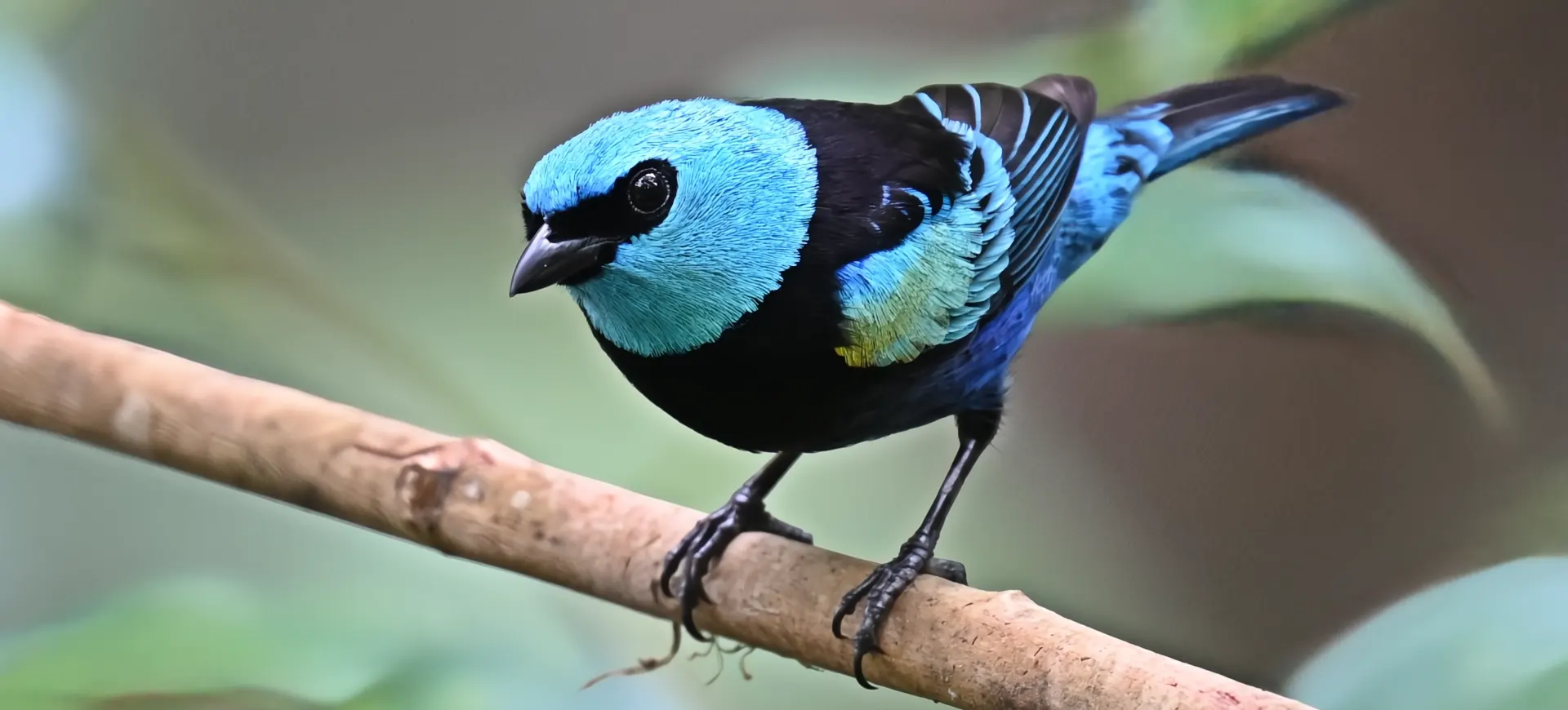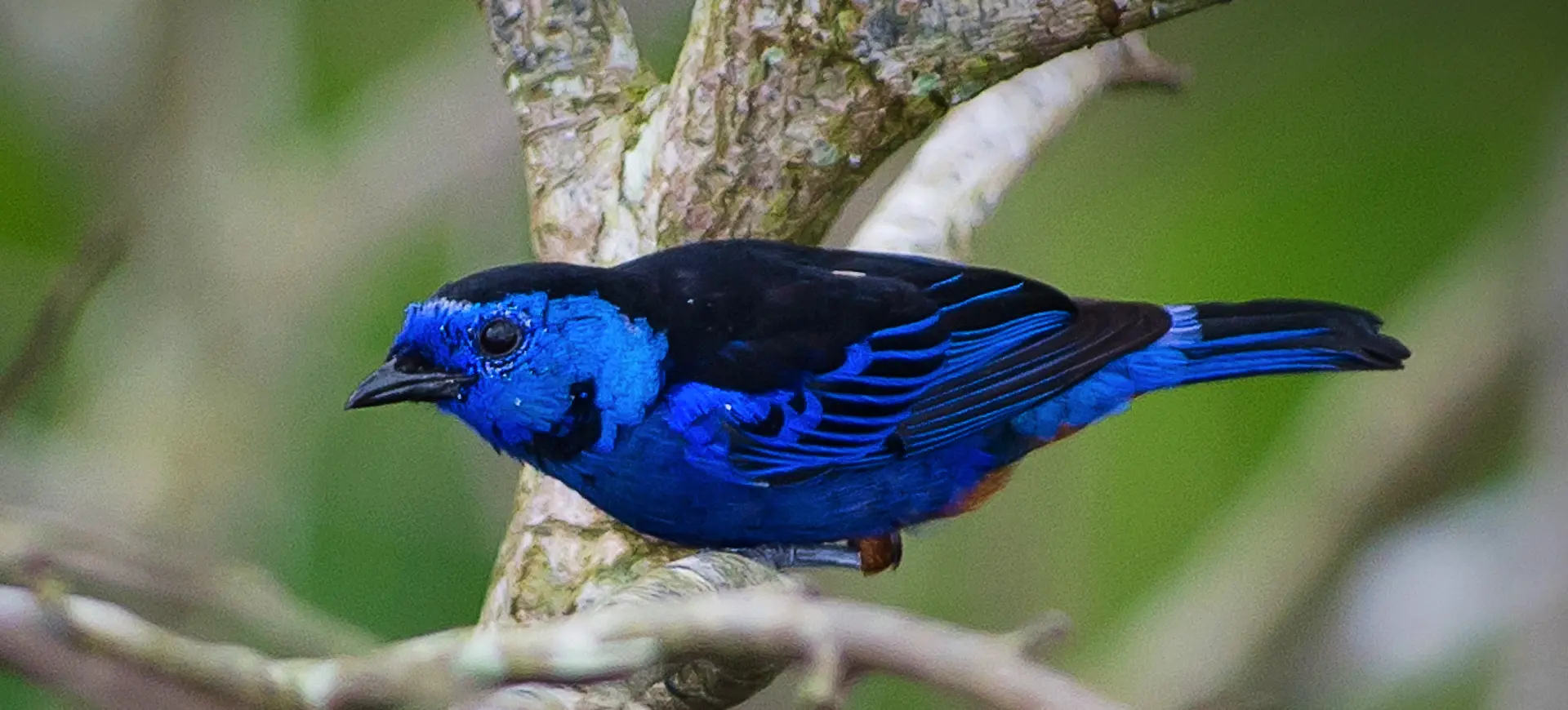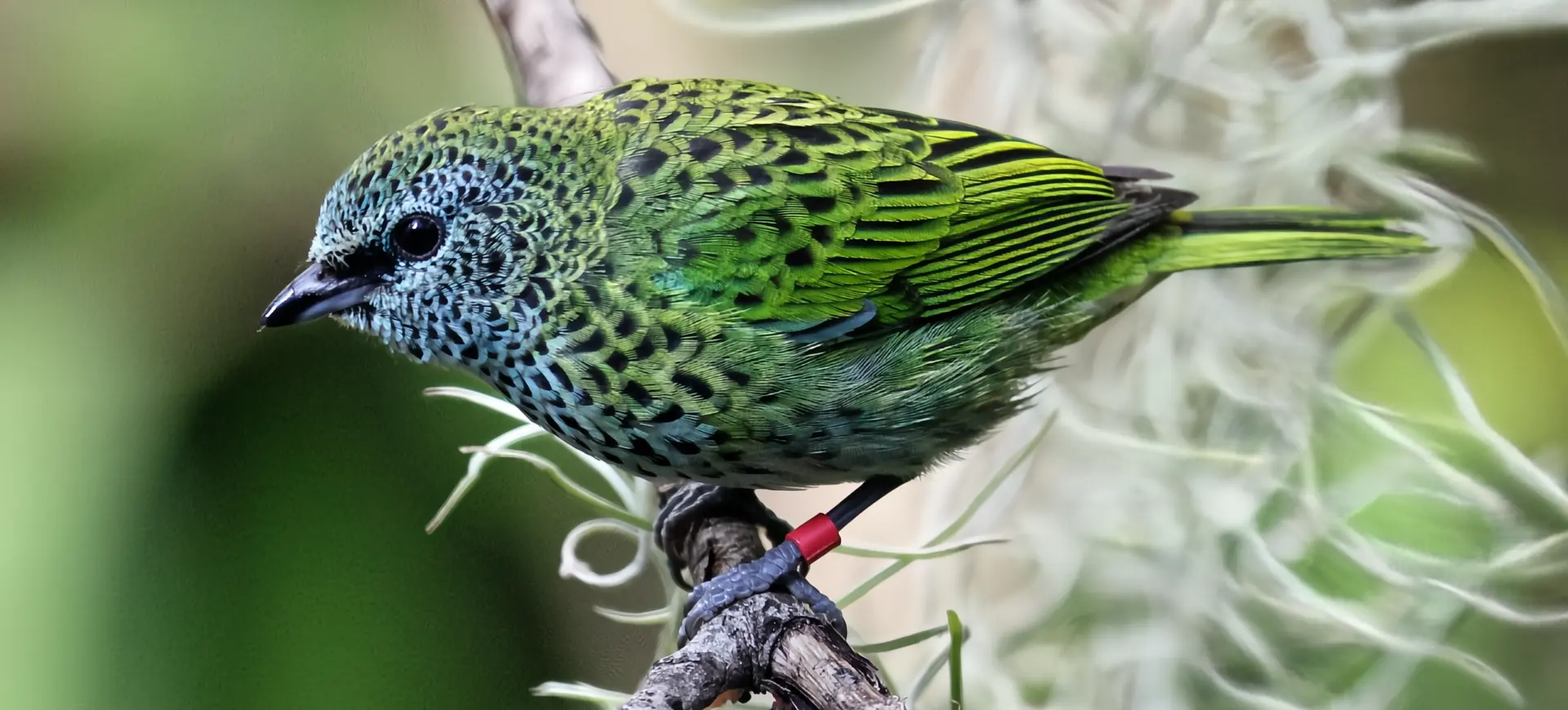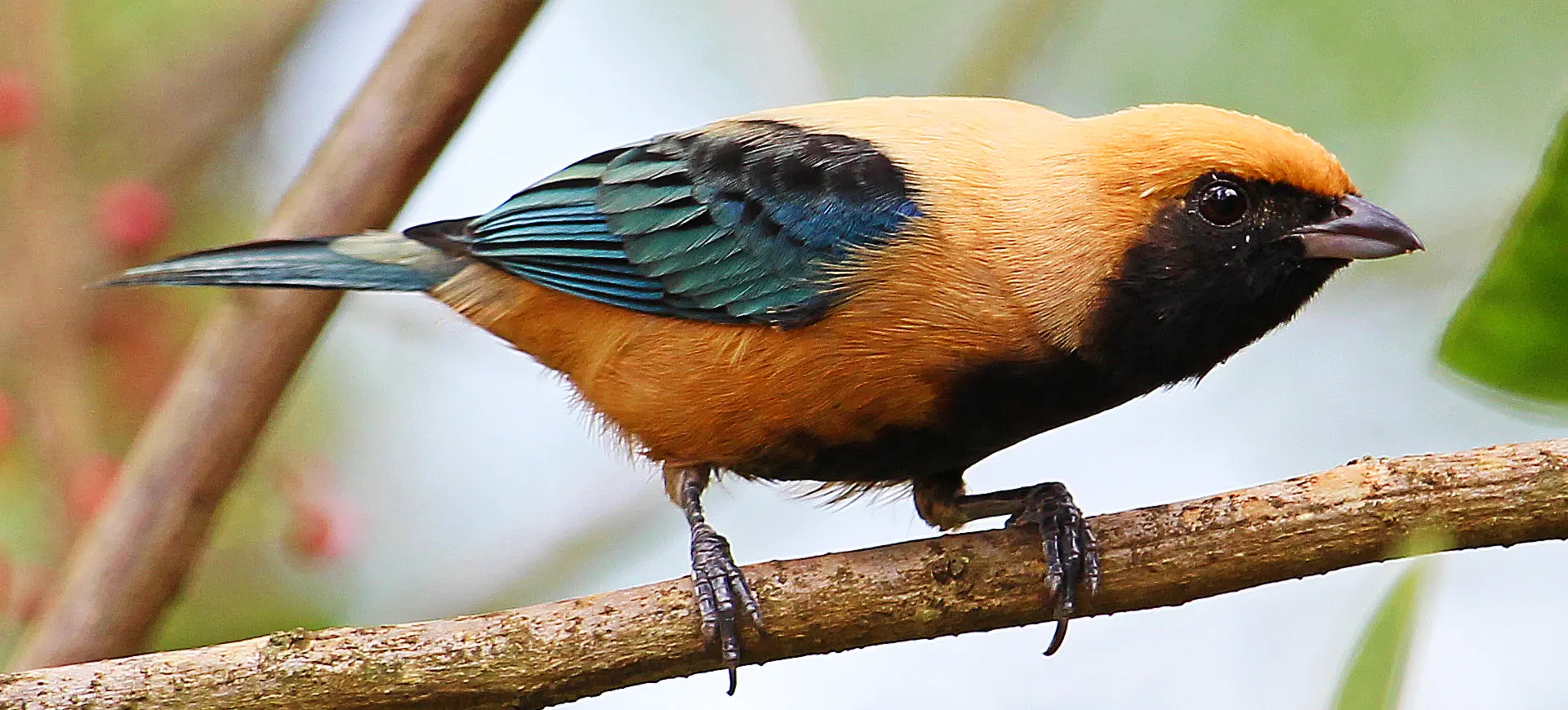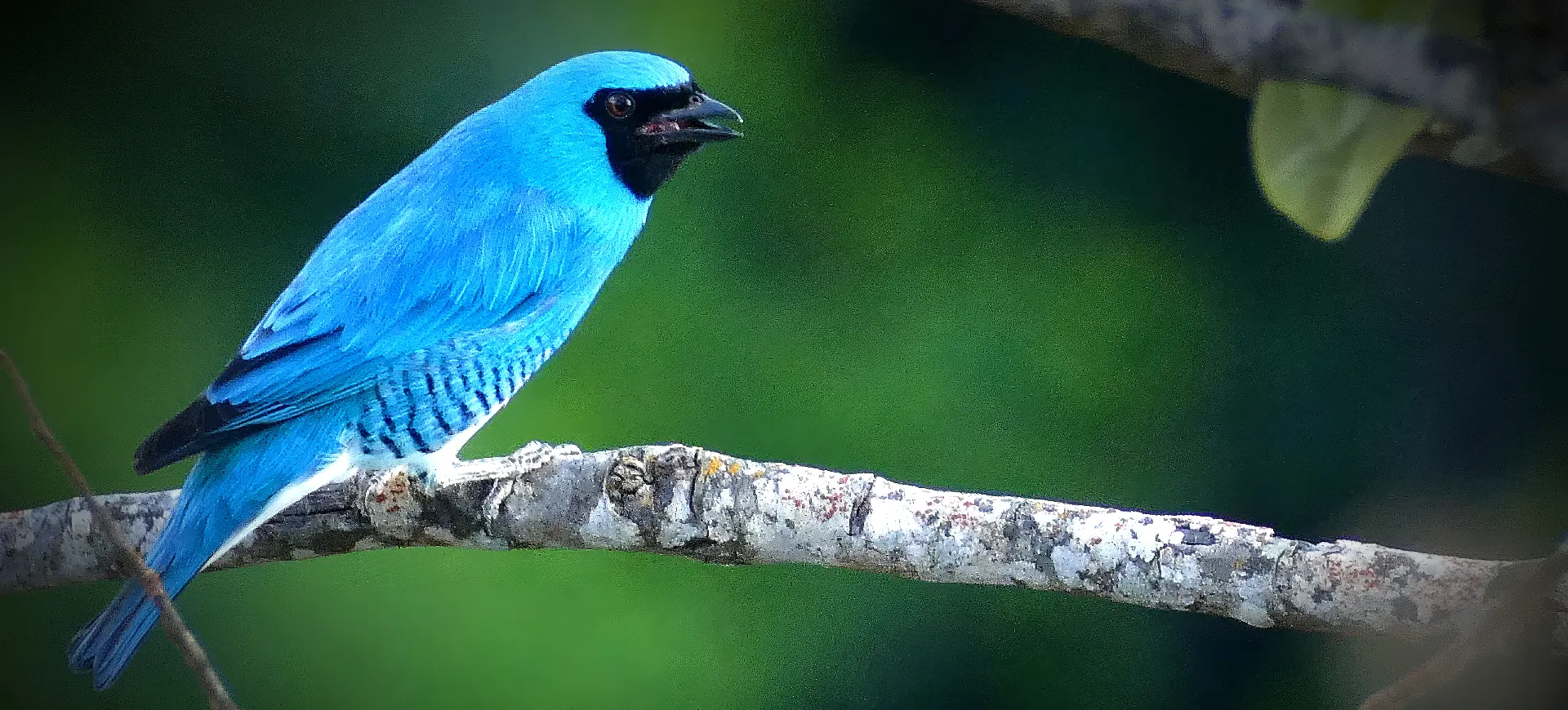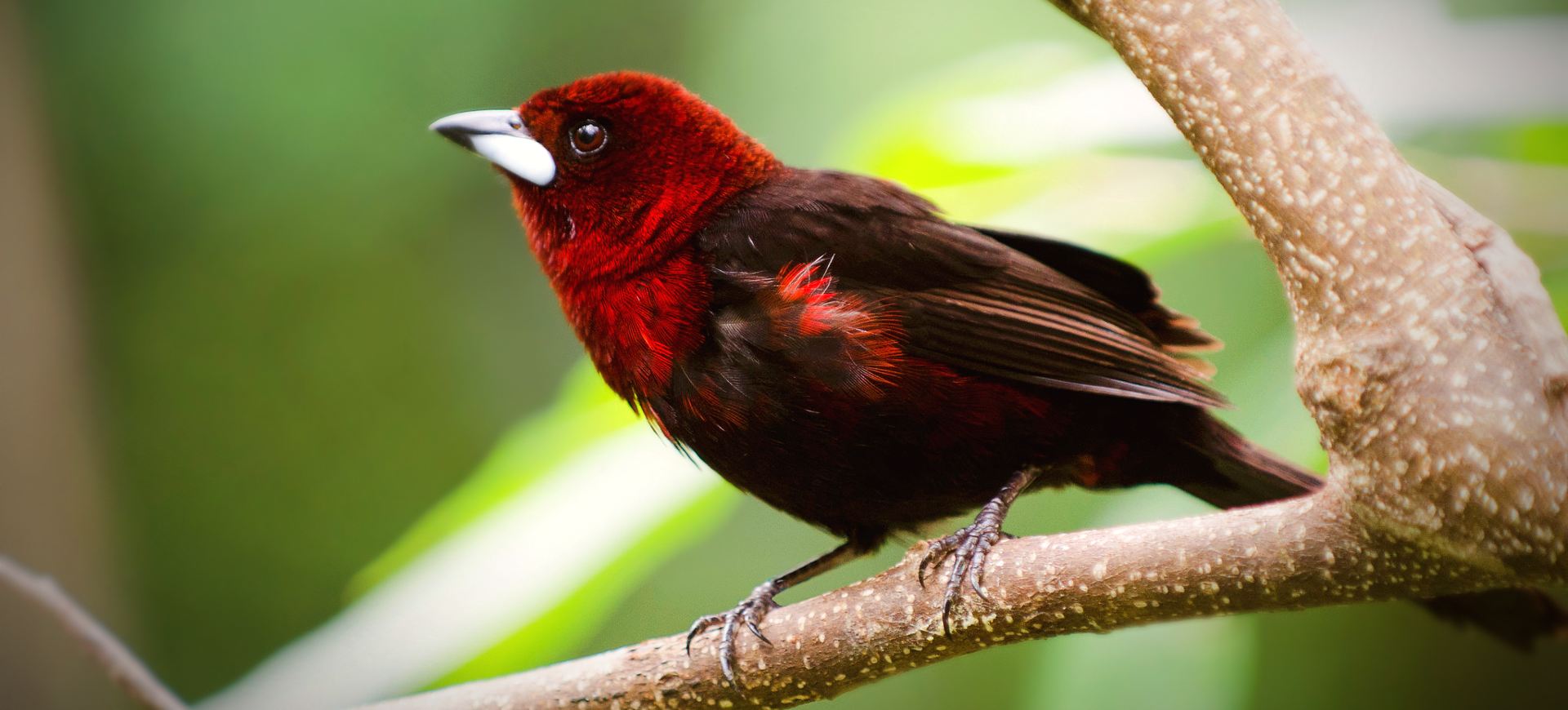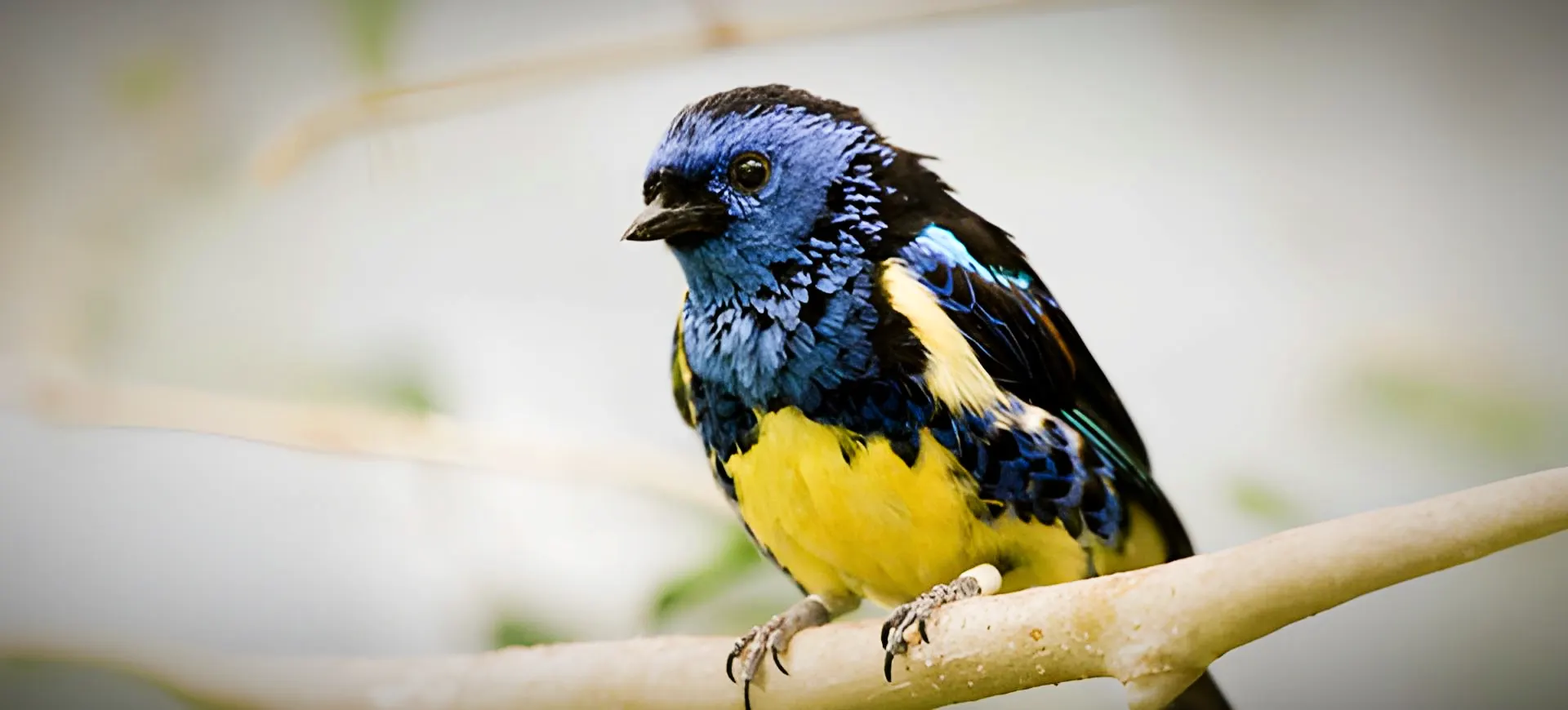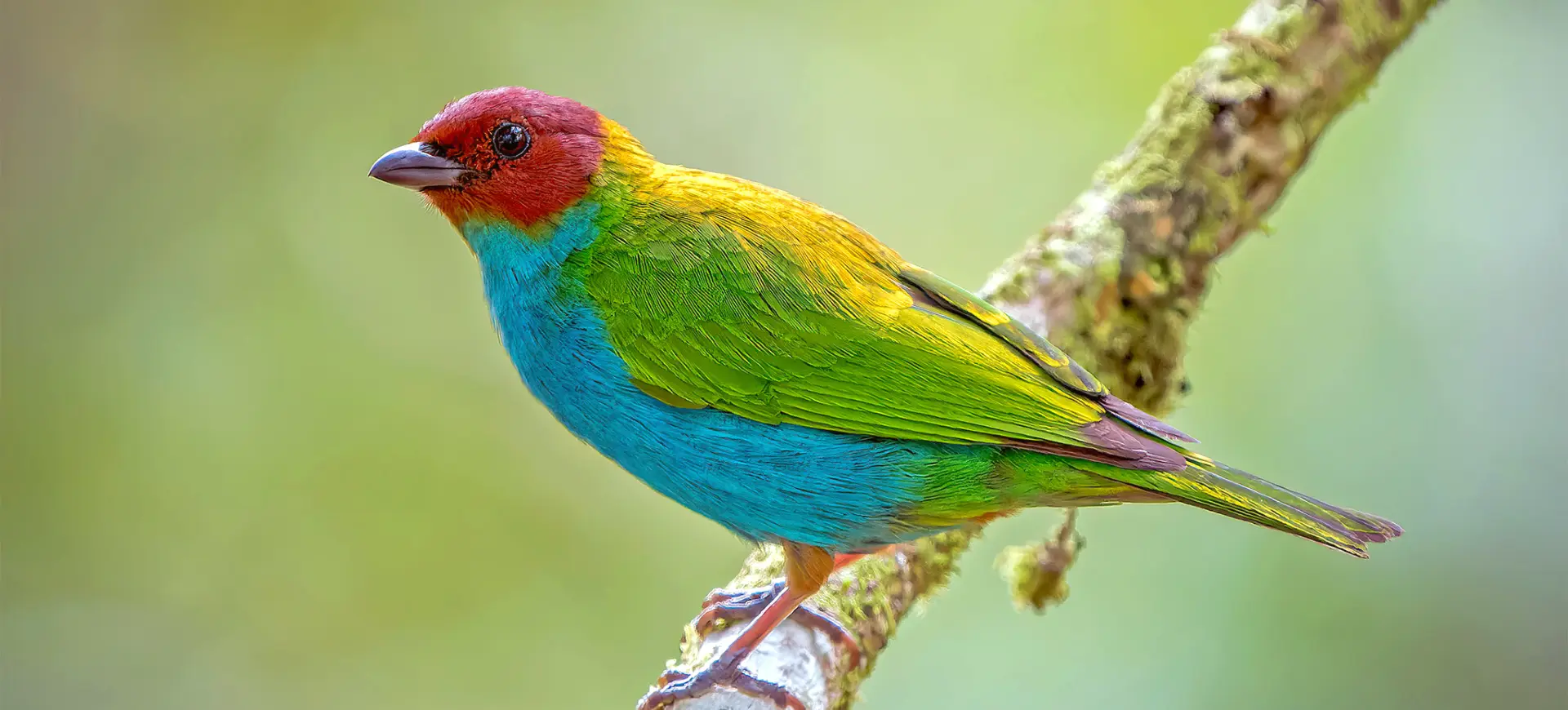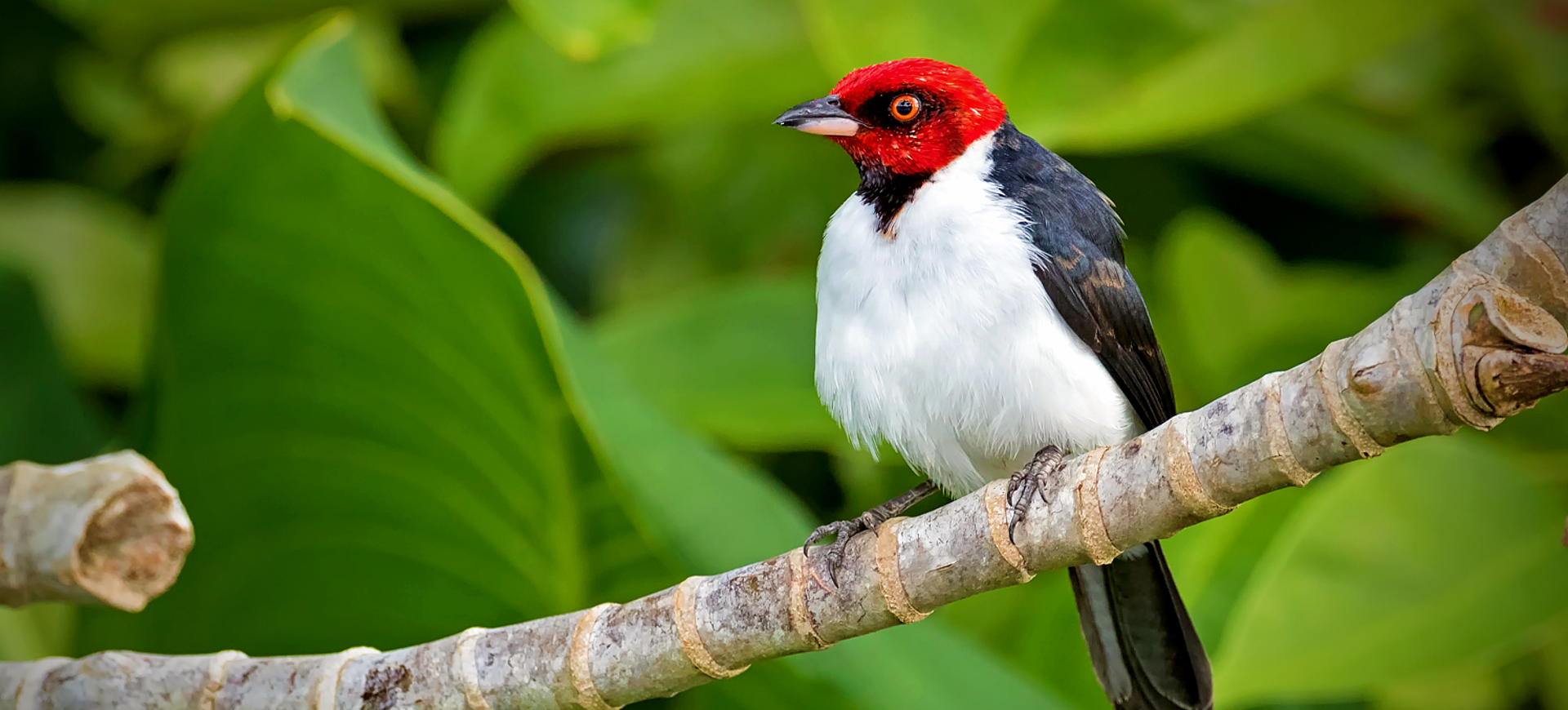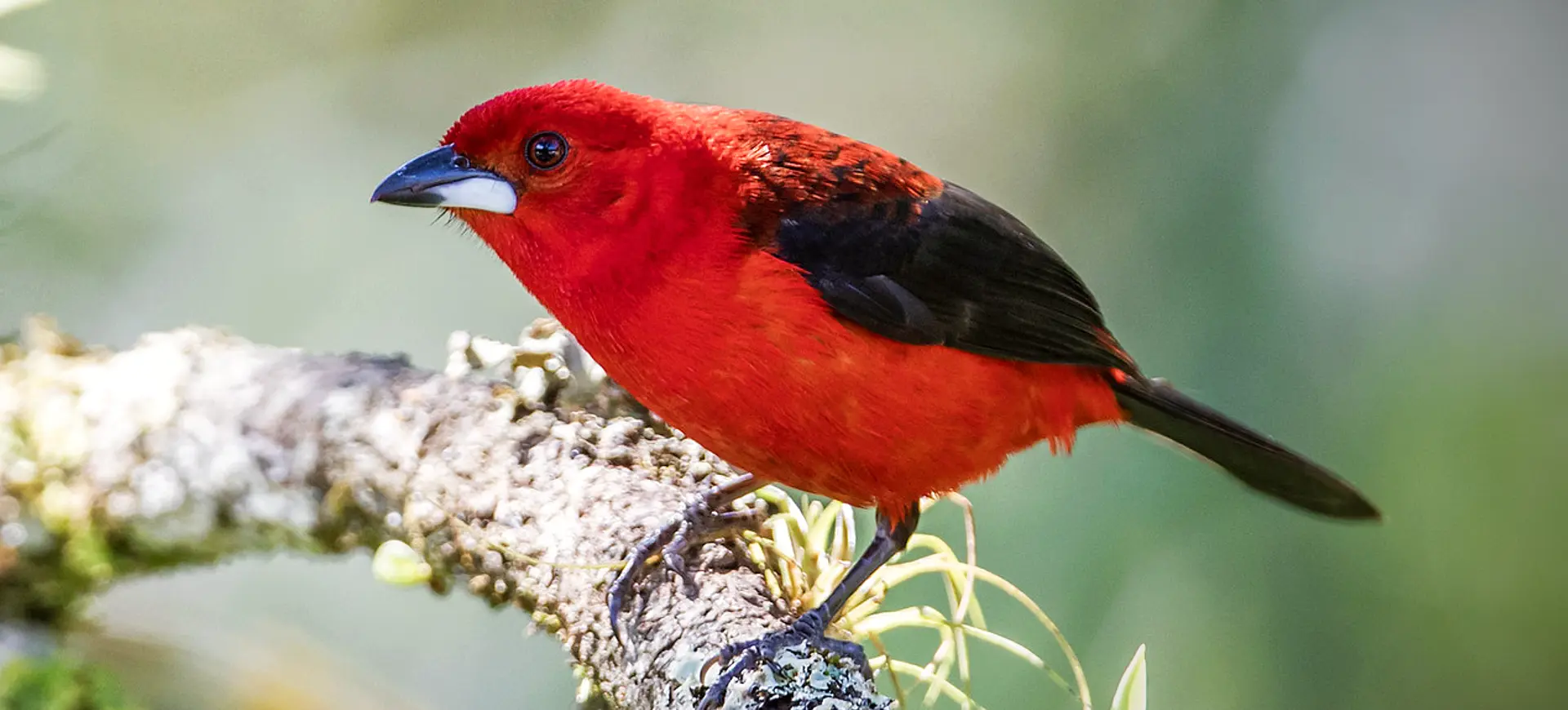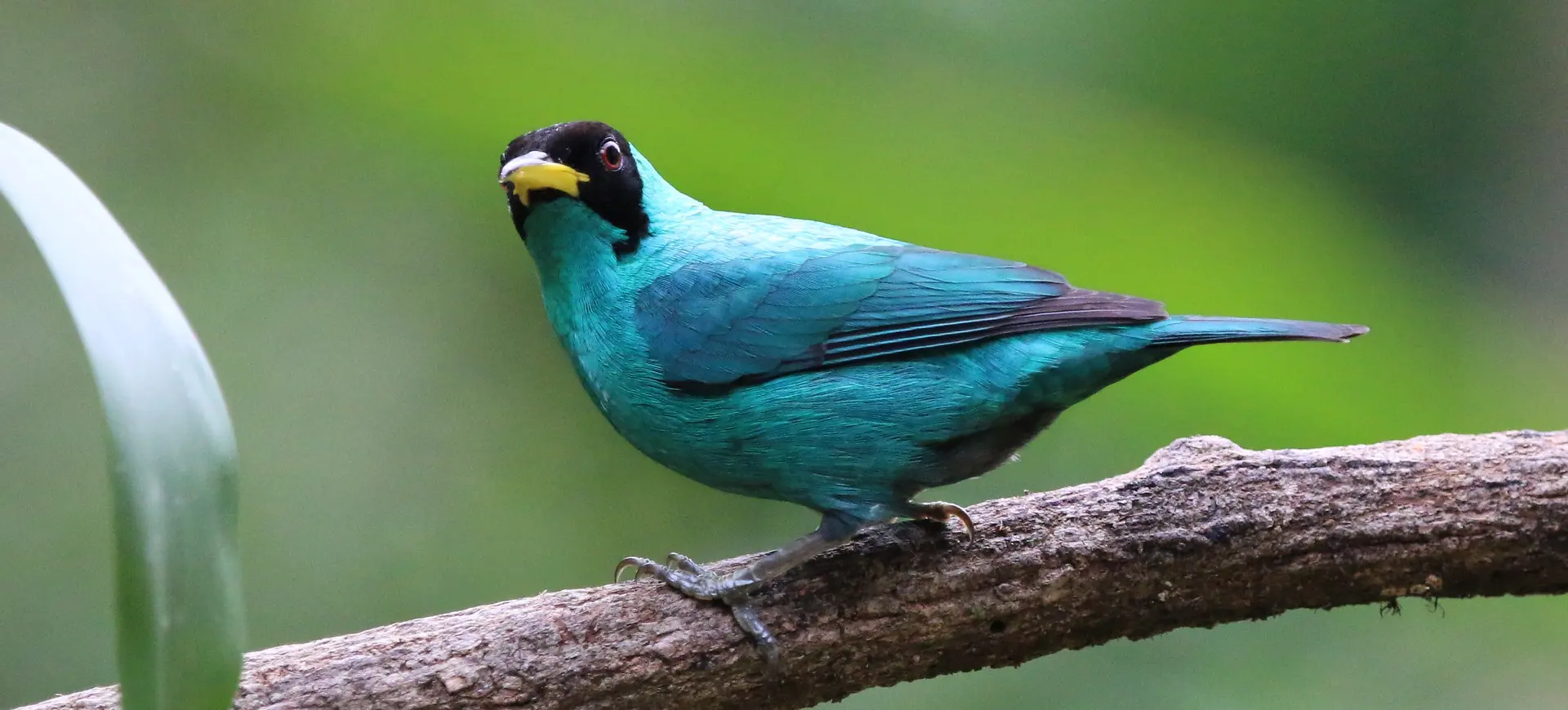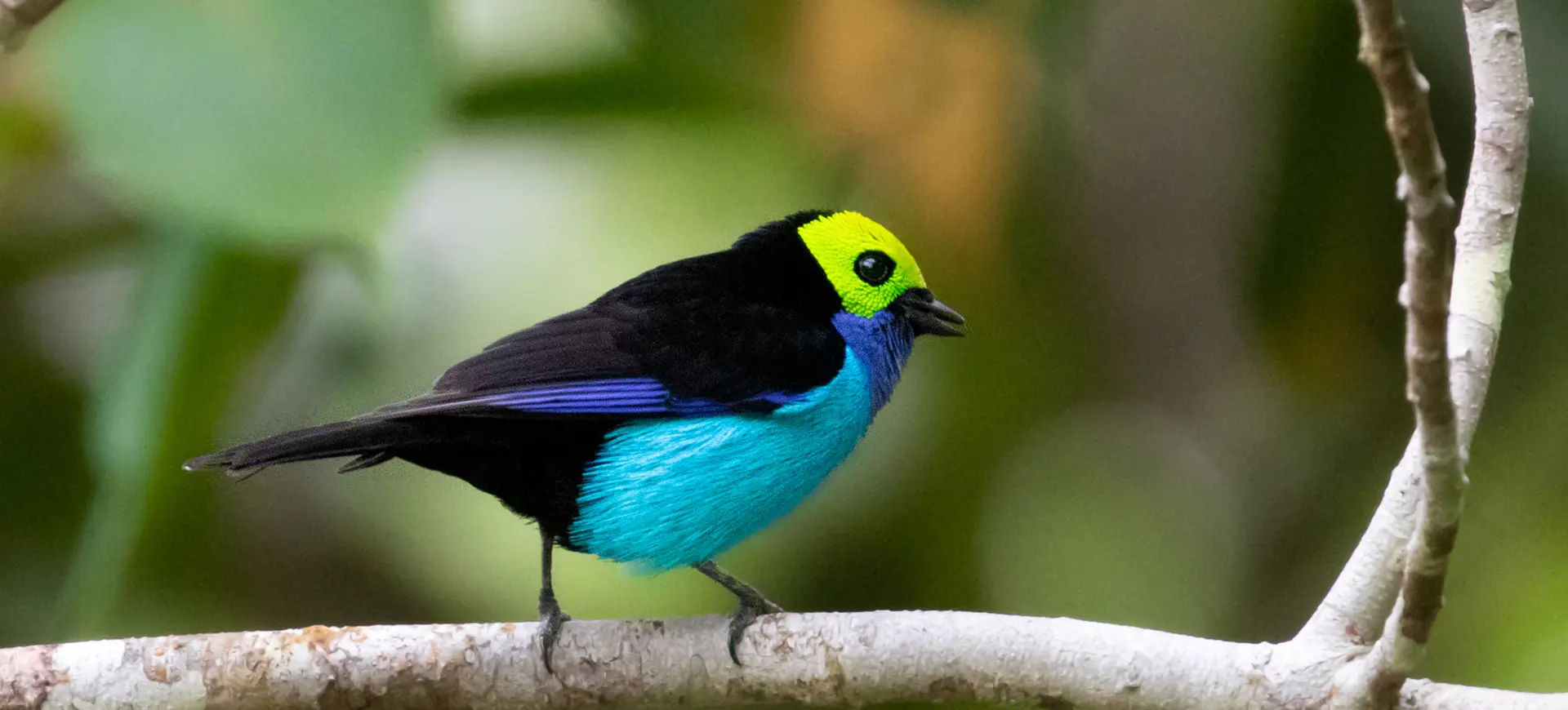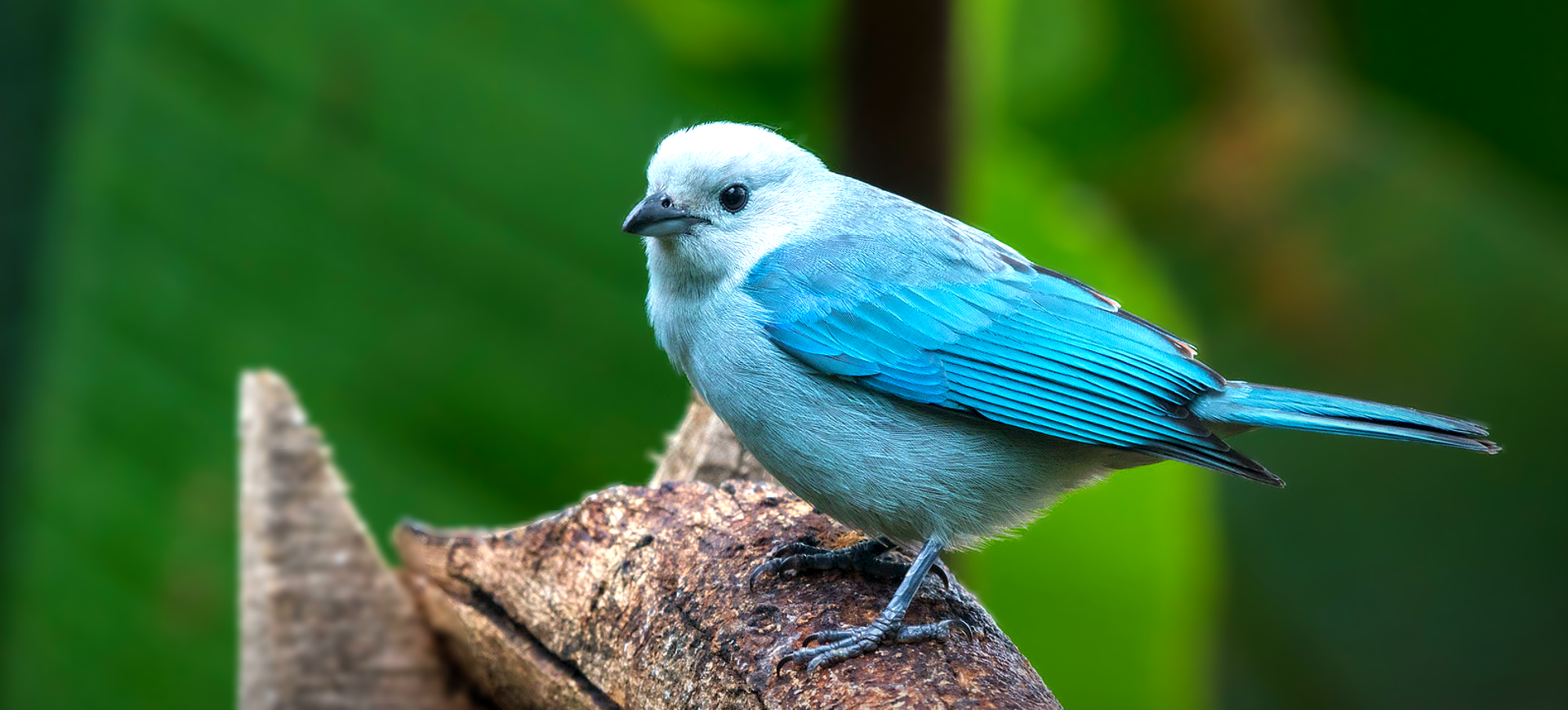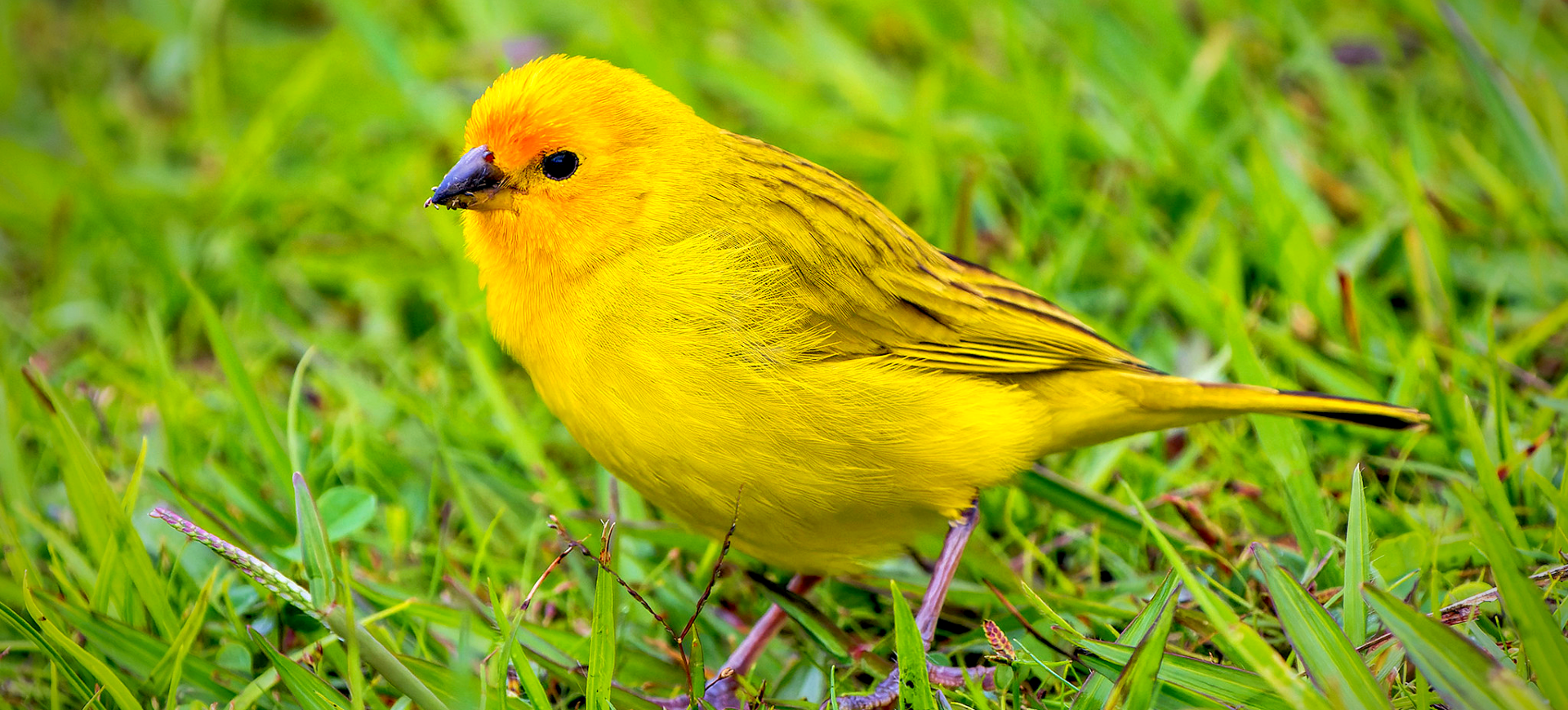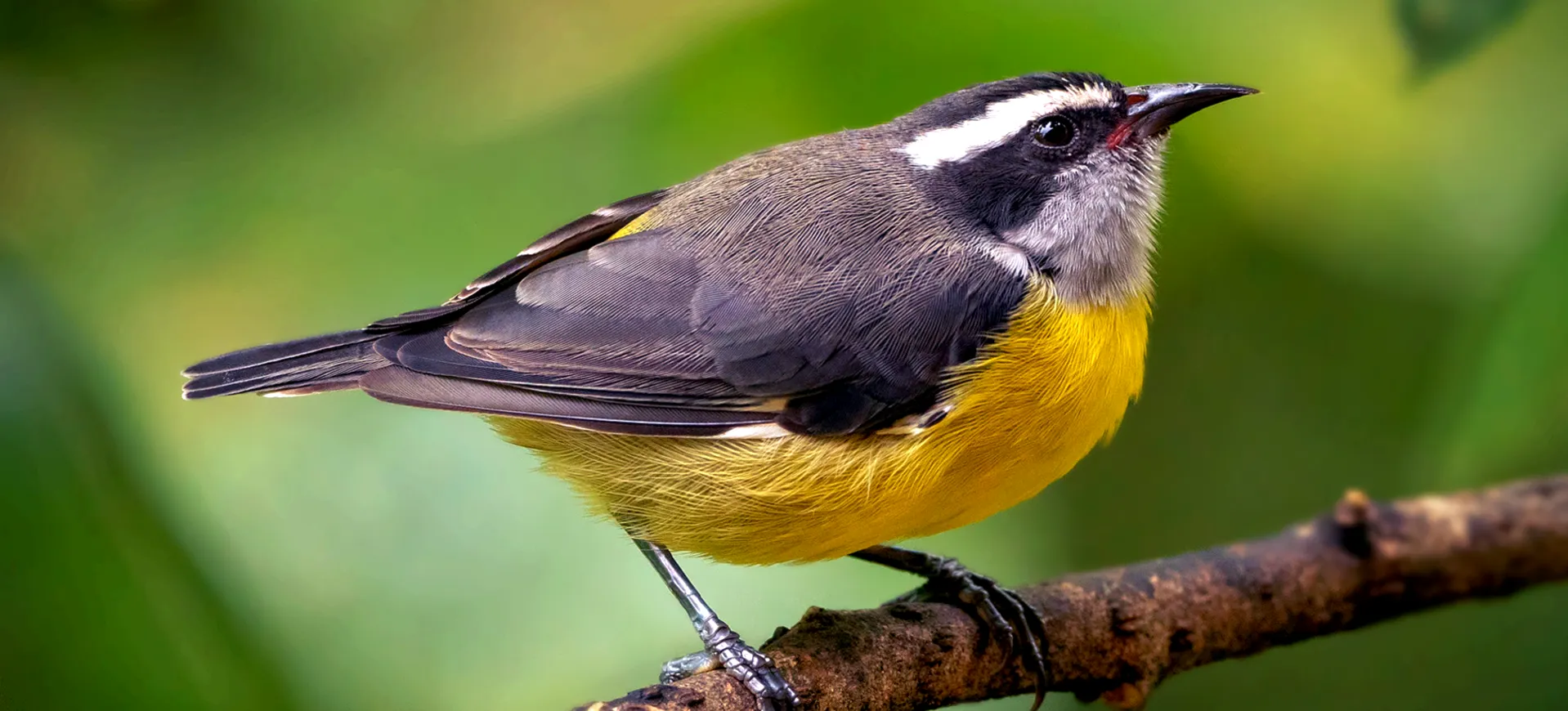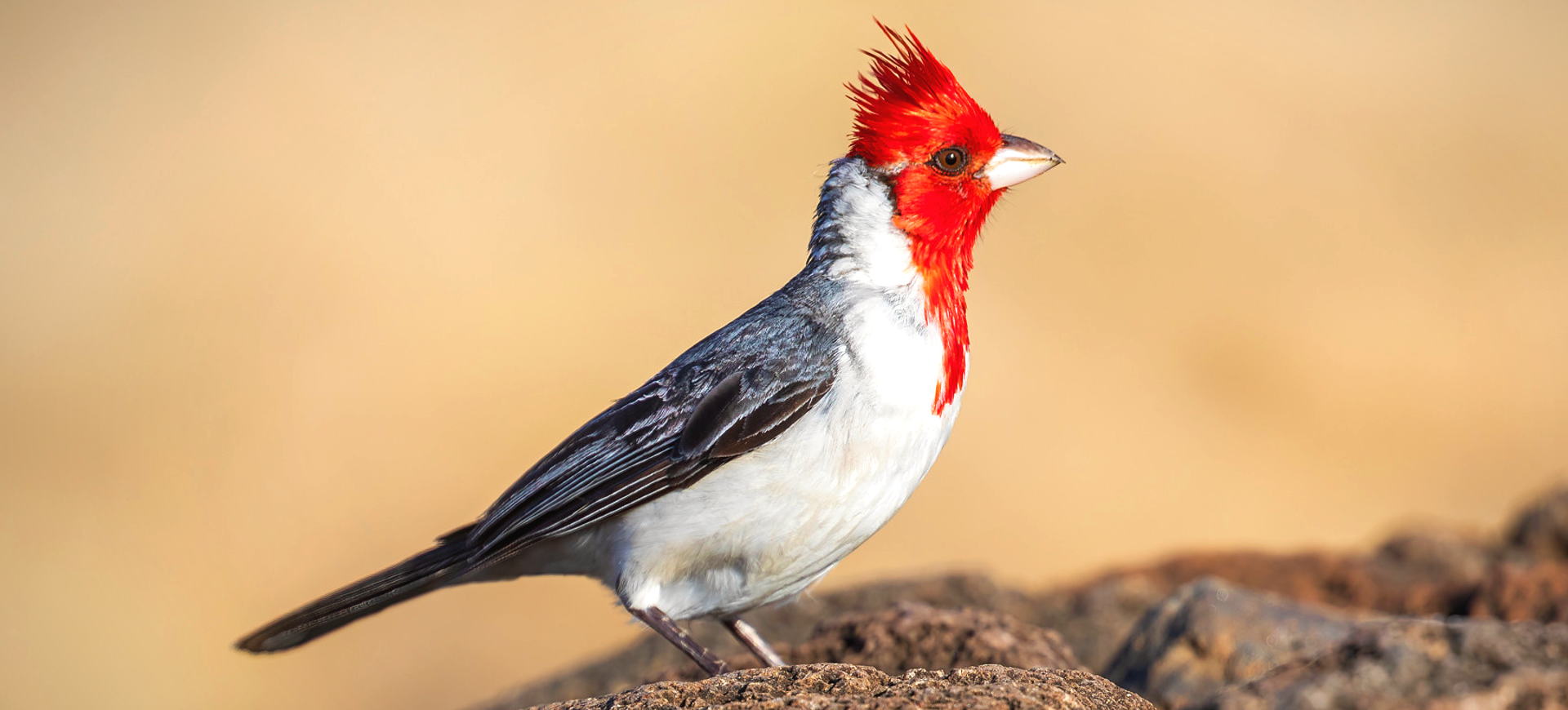Overview
The Purple Honeycreeper, known for its striking plumage, is a small bird native to the tropical regions of South America. The male is predominantly purple with black wings and tail, while the female and juveniles are mostly green with a yellowish throat and vent. This species exhibits sexual dimorphism, with males being more brightly colored than females, a common trait in many bird species. The Purple Honeycreeper is primarily found in forested habitats, including primary and secondary-growth forests.
The bird’s diet mainly consists of nectar, which it obtains using its curved bill, adapted for feeding from flowers. In addition to nectar, it also consumes fruits and, occasionally, insects, making it an omnivore. The Purple Honeycreeper plays a significant role in its ecosystem as a pollinator, contributing to the health of the forest environments in which it lives. The bird’s feeding habits also aid in seed dispersal, further supporting the growth and maintenance of its habitat.
The Purple Honeycreeper is a small bird with a length typically ranging from 4.5 to 5 inches. It is a member of the tanager family, though its nectar-feeding habits are similar to those of hummingbirds. The bird’s vibrant coloration and active behavior make it a favorite among birdwatchers. Despite its small size, the Purple Honeycreeper is known for its loud and melodious song, often heard throughout its habitat.
Taxonomy
Kingdom
Phylum
Class
Order
Family
Genus
Species
Sub Species
Type
Physical Description:
The Purple Honeycreeper is a visually striking bird, most notable for the vibrant purple plumage of the male, which contrasts sharply with its black wings and tail. Females, in contrast, have a predominantly green coloration with yellowish underparts. Both sexes exhibit a distinctive curved bill, long and slender, adapted specifically for nectar feeding. The bird’s small size, typically around 4.5 to 5 inches in length, and slender build are well-suited to its arboreal lifestyle and feeding habits.
In terms of physical characteristics, the bird’s slender, curved bill is one of its most distinctive features. The bill’s shape is perfectly adapted for extracting nectar from flowers, a primary component of the bird’s diet. The male’s bright purple plumage is another key characteristic in attracting mates and signaling health and vitality. Purple Honeycreepers are agile and active despite their small size, often seen flitting about in the forest canopy.

Lifespan: Wild: ~8 years || Captivity: ~10 years

Weight: Male& Female: 0.4-0.5 oz (11-14 g)

Length: Male & Female: 4.5-5 in (11-13 cm)

Wingspan: Male & Female: 5-6 in (13-15 cm)

Top Speed: Unknown
Characteristic:
Native Habitat:
The Purple Honeycreeper is native to the tropical regions of South America, inhabiting a range of forested environments. These habitats include primary and secondary tropical forests, often with a preference for areas rich in flowering plants. The bird’s habitat choice is closely linked to its feeding habits, as it relies heavily on nectar and fruit, abundant in these forested areas. Additionally, the dense foliage of these forests provides the Purple Honeycreeper with cover from predators and suitable nesting sites.
The bird’s presence in these habitats indicates a healthy forest ecosystem, as it relies on various flowering plants for nectar. Its role as a pollinator in these environments is crucial, contributing to the health and diversity of the forest. The Purple Honeycreeper’s adaptation to various forested habitats demonstrates its resilience and flexibility in different environmental conditions. However, this dependence on forest habitats makes the species vulnerable to habitat loss and fragmentation, a significant concern given the ongoing deforestation in many parts of South America.
Climate Zones:
Biomes:
WWF Biomes:
Biogeographical Realms:
Continents:
Diet:
Diet & Feeding Habits:
The diet of the Purple Honeycreeper primarily consists of nectar, which it obtains from various flowers using its specialized, curved bill. This adaptation allows the bird to access nectar deep within flowers, a feeding habit similar to that of hummingbirds. In addition to nectar, the Purple Honeycreeper feeds on fruits and occasionally insects, providing a balanced diet. This varied diet plays a role in the bird’s habitat, as it contributes to pollination and seed dispersal, supporting the health of the forest ecosystem.
When feeding on nectar, the Purple Honeycreeper often hangs upside down from branches, showcasing its agility and acrobatic skills. This unique feeding behavior allows the bird to access nectar from various angles, making the most of the available floral resources. The bird’s preference for certain types of flowers also influences its habitat choices, often leading it to areas with abundant flowering plants. The occasional consumption of insects provides the bird with essential proteins and other nutrients, rounding out its diet and contributing to its overall health.
Mating Behavior:
Mating Description:
The mating behavior of the Purple Honeycreeper is characterized by the male’s display of its vibrant plumage to attract females. Males often engage in elaborate courtship displays, which include singing and showing off their bright feathers. These displays occur in the forest canopy, where males can be seen hopping from branch to branch, vocalizing loudly to attract a mate. The male’s plumage and display influence the female’s choice of mate, with brighter and more active males often being more successful.
Once a pair is formed, the Purple Honeycreeper engages in nest-building, with the female constructing the nest. The nests are typically small and cup-shaped, built in the higher branches of trees. The female lays two to three eggs, which she incubates, while the male provides food and protection. The monogamous pairing of Purple Honeycreepers during the breeding season is essential for the successful raising of their young, as both parents play vital roles in the process.
Reproduction Season:
Birth Type:
Pregnancy Duration:
Female Name:
Male Name:
Baby Name:
Social Structure Description:
The Purple Honeycreeper is typically observed in small groups or pairs, especially during the breeding season. These social structures are crucial for foraging efficiency and protection from predators. The bird’s social interactions are often centered around food sources, with individuals communicating through vocalizations and body language. During the breeding season, pairs exhibit strong bonds, with both males and females participating in raising the young.
Outside the breeding season, Purple Honeycreepers may join mixed-species flocks, a common behavior in many tropical birds. These mixed flocks provide enhanced foraging opportunities and increased vigilance against predators. The bird’s social behavior is an important aspect of its survival, allowing it to effectively navigate its environment and access resources. Understanding the social dynamics of the Purple Honeycreeper provides insights into its ecology and behavior, contributing to effective conservation strategies.
Groups:
Conservation Status:
Population Trend:
The Purple Honeycreeper, currently listed as ‘Least Concern’ by the IUCN, has a relatively stable population trend in the wild. This stability can be attributed to the bird’s wide distribution and adaptability to various forest habitats. Despite this, localized threats such as habitat loss and fragmentation can impact certain populations, making ongoing monitoring essential.
The bird’s presence in various forested environments across South America indicates a resilience to environmental changes. However, the region’s ongoing deforestation and habitat degradation pose significant threats to the species. Conservation efforts focusing on preserving and restoring forest habitats are crucial for maintaining healthy populations of the Purple Honeycreeper. Additionally, research into the species’ population dynamics and habitat requirements is important for effective conservation planning.
Population Threats:
The primary threat to the Purple Honeycreeper is habitat loss and fragmentation due to deforestation and land use changes in South America. The destruction of tropical forests for agriculture, logging, and urban development directly impacts the bird’s habitat, reducing the availability of food sources and nesting sites. Climate change also poses a long-term threat, potentially altering the birds’ habitat and
affecting the availability of flowering plants crucial for their nectar-based diet. Invasive species and introduced predators in some areas can also threaten the Purple Honeycreeper, impacting nest success and juvenile survival rates.
Conservation policies that focus on protecting large tracts of forest are essential for the survival of this species. Sustainable land-use practices that minimize habitat destruction can significantly benefit the Purple Honeycreeper. Education and awareness programs aimed at local communities can also play a crucial role in the bird’s conservation, promoting the importance of preserving natural habitats. Collaborative efforts between conservation organizations, governments, and local communities are vital to ensure the long-term survival of the Purple Honeycreeper and the ecosystems it inhabits.
Conservation Efforts:
Conservation efforts for the Purple Honeycreeper primarily focus on habitat conservation and restoration. Protecting large tropical forest areas is crucial for maintaining the bird’s natural habitat and food sources. Reforestation projects in habitat loss areas can potentially restore crucial feeding and nesting sites. Conservation organizations are also promoting sustainable land-use practices that benefit the environment and local communities.
In addition to habitat conservation, research plays a significant role in conserving the Purple Honeycreeper. Studies on the bird’s ecology, behavior, and habitat requirements provide valuable information for conservation planning. International collaboration is important, given the bird’s distribution across multiple countries. Conservation initiatives that involve local communities in habitat protection and environmental education are also beneficial, fostering a sense of stewardship and ensuring the long-term success of conservation efforts.
Additional Resources:
Fun Facts
- The male Purple Honeycreeper’s vibrant purple plumage is one of its most distinctive features.
- Despite its name and appearance, the Purple Honeycreeper is more closely related to tanagers than true honeyeaters.
- The bird’s curved bill is a specialized adaptation for feeding on nectar, similar to that of hummingbirds.
- In addition to nectar, the Purple Honeycreeper’s diet includes fruits and occasionally insects.
- The species plays a vital role as a pollinator and seed disperser in its ecosystem.
- The Purple Honeycreeper’s habitat ranges across various tropical tropical forests in South America.
- Its song is melodious and often heard in the forest canopy.
- Females are primarily responsible for building the nest and incubating the eggs.
- The bird is known for its agility, often seen hanging upside down while feeding.
- Conservation efforts for the Purple Honeycreeper focus on habitat preservation and sustainable land use.





